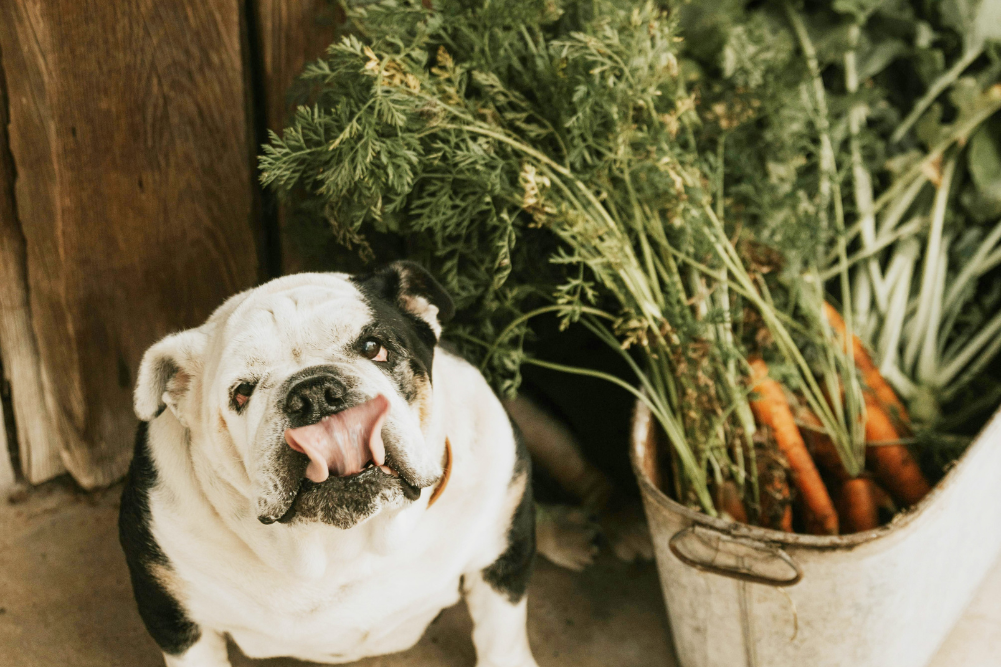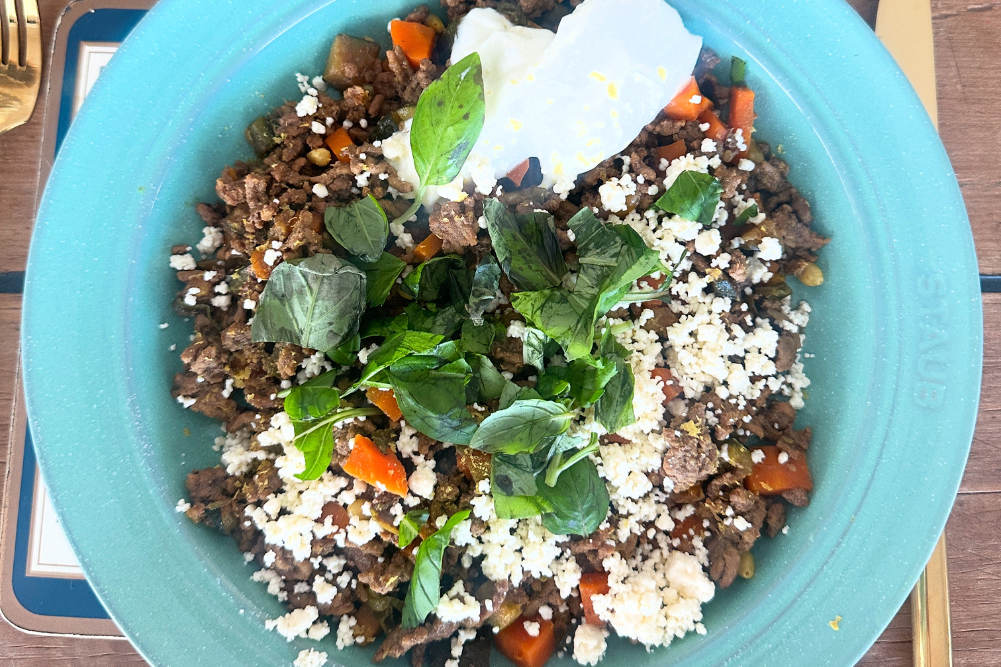Homesteading for beginners
A retro lifestyle based on providing for our own practical needs, homesteading focuses on activities like growing food and producing our own energy and household products. With food, fuel, power bills and more on the rise, it’s a good time to get on board.
While associated with the back-to-the-land movement, elements of homesteading can be practised almost anywhere, including in the city. Benefits include reduced costs, connection to nature, traditional knowledge and our own creativity and initiative, plus a greater sense of security. It’s also friendlier on the environment — items made at home accrue fewer food miles and contribute fewer pollutants.
In reality, homesteading occurs on a spectrum. It’s impossible to be fully self-sufficient. However, providing for many of our own needs can make a difference and generate joy and satisfaction.
Getting started
Homesteading requires time, energy, knowledge, skills and practice. Begin with something you enjoy. To build skills, explore the range of courses, DIY books, blogs, vlogs, niche magazines and more on subjects like permaculture, herbal medicine, Indigenous crafts, building and so on — whatever appeals to you. Also source help from the older generation and those following the lifestyle.
As DIY requires various tools and materials, free up workspace and storage at home for your activities. But before you fork out on stuff, have a plan.
Nevin Sweeney, founder of the Under the Choko Tree sustainable living blog and a former industrial chemist and president of Permaculture Sydney West, says having a plan will help you maximise your time, resources and money. Start by measuring your consumption. “What you don’t measure you don’t control,” he says.
Map out your action plan with a method that suits you, whether it’s a notebook, drawing, spreadsheet or regular strategy meeting. Roman Spur, a sustainable design engineer who shares homesteading tips via his Spurtopia blog and regular workshops, started out with a diagram. Sketching his Fernvale property in south-east Queensland 60 kilometres west of Brisbane, he created a vision of how he wanted to live in a few years’ time then developed goals to realise that. However, don’t try to achieve everything at once, he says. “It would be overwhelming. Start slowly.”
Growing food
Sweeney and his wife grow 80 per cent of their vegetables, 100 per cent of herbs, 90 per cent of fruit and 50 per cent of the eggs they consume on a mere 600 square metre block in suburban St Clair in Western Sydney. Central to having an ongoing food supply on a small block, he says, is utilising whatever space you have, including shady and vertical areas, replenishing the soil and succession planting — the staggered sowing of seeds. Sweeney has 14 veggie patches and rotates
a tractor around them every two months.
Along with vegetables, herbs, fruit and nut trees, you can grow aquatic plants, native edibles, mushrooms and perennial food plants. Natives and perennials are the least labour intensive. “Our current diet is annual rich, but there’s a whole stack of perennials out there,” he says. Mushrooms can be great for low-lit areas while many leaf crops can grow on two hours of sunlight a day, he says. “It’s a way of growing food in an area otherwise difficult.” Sweeney also grows water chestnuts and other aquatic species within bathtubs.
Sprouts, herbs and microgreens are ideal for those living in units, nutritious and easy to grow. The seeds can be purchased inexpensively from Asian grocers, he says.
“There’s a whole variety of things you can grow indoors.” Another strategy is to grow under lights.
Just as important, reminds Spur, is to actually eat what you grow. Spur and wife Jana also grow grains like amaranth and sorghum and a tropical nut. “We’ve got most of our food demands growing from the garden on the property,” he says.
Chooks, bees, worms, frogs and other helpers
Homesteaders commonly encourage and keep other species for pollination, pest control, fertiliser, soil enhancement and food products like honey and eggs. Sweeney encourages biodiversity and wildlife in his garden with water-filled bathtubs and bird and bat boxes. At Spurtopia Homestead the Spur family keep bees for honey, brewing mead and sweetening homemade lemonade. Last season the Spurs’ seven hives produced over 250 kilograms of honey. The beeswax also comes in handy for making food wraps, candles and lip balm.
Linda Woodrow, author of The Permaculture Home Garden and 470 (a fictional novel imagining what it would be like to live in a climate-change future and the strategies that would be useful), has 12 chickens, a worm farm and Australian native bees on her modest 500 square metre property at Coffs Harbour. The native pollinators produce less honey than the honeybee kind, producing three small cups a year, but don’t suffer from the varroa mite, she says.
Food preservation
Understanding food preservation is essential to prolonging any harvest or excess and squirrelling it away for future use. The Spurs, who grew up in the culture of the Czech Republic and have three young daughters, were fortunate to learn a hands-on self-sufficient lifestyle from their families and say you can preserve food with things you have at home.
The main methods, Spur says, are canning and bottling using heat, brine, salt or sugar, and drying of herbs, legumes, flours and more. “We have all sorts of dried stuff,” Spur says. Their stocks include 40 kilograms of dried beans. Preserved, sealed and stored properly, he says dried and canned food can last a few years. The Spurs simply use old glass jars they sterilise in boiling water.
Making your food into beverages is another way to preserve food. Spur makes his own beer, wine, ginger beer and juices. Any juices the family can’t drink are frozen for later use. But, he says, “in general, it’s always best to eat food fresh.”
Making food products
Homesteaders enjoy making a range of delicious food products from their crops and inexpensive staples like flour and legumes.
Woodrow rises early to make her regular food supplies. This includes sourdough, pitta bread, naan, crackers and yoghurt. “I haven’t bought bread for 15 years,” she volunteers. From her homemade yoghurt, she also produces labneh or yoghurt cheese. Along with saving her money, making her own food products is satisfying and reduces packaging — Woodrow wraps her breads in tea towels. She also concocts her own pasta, hummus from chickpeas cooked in the slow cooker while her solar power is at its most efficient and mayonnaise using eggs from her chickens. “If all you have is some egg, flour and herbs, you can make a nice pasta dinner,” she says.
The Spurs have over 200 jars of preserved products in their pantry, including pumpkin chutney, rosella and guava jams, guava barbecue sauce and tomato relish. The pair also create a cake out of home-grown beans.
Producing and reducing power
Sweeney suggests starting with an energy audit. “See where your energy is going. There’s a whole stack of things you can do to reduce what you use.” Given heating and cooling comprise the lion’s share of most energy bills, insulate and seal your home, including the windows, to the best standard you can, and introduce whatever passive solar design elements you’re able to, he says. “It can make a huge difference.”
As an example of passive solar design on an existing home, Woodrow and her husband built a small deck on the west side of their house and created a green wall with kiwifruit and grape vines. In winter, the deciduous vines lose their leaves letting the sun in; in summer they create shade. Powered vents in the roof cavity and floor suck out hot air, while large glass doors can be opened up, reducing the need for air conditioning in summer. “A lot of the same strategies scaled down will work in a unit,” she says. “Look at how you can passive solar your situation by knowing which way is north, south, where’s the sun coming in.”
Sweeney uses a wood-fired stove which cooks as well as heats the home in winter, supplied by wood from his property, free scrap timber and some that’s purchased, plus a small reverse-cycle air conditioner that can be partly powered by his solar system. “We stay off-grid as long as we can,” he says. “For 80 per cent of the year that’s easily doable.”
Along with installing solar power, there are many inexpensive gizmos you can make or buy to harness free energy. Sweeney uses his own homemade solar ovens for cooking soups and stews. Other ideas are rocket stoves and biogas digesters. Spur also uses a homemade wood-fired outdoor barbecue and bakes bread and cakes in his solar oven. Cooking outdoors, or using sun power, means you have to adjust your habits a bit, he says.
Also swap high-energy appliances for more efficient ones. Sweeney favours his rice cooker and small electric induction single burner.
Water harvesting
Whether it’s a bucket in the rain, tanks or filling up bottles at a clean local spring, harvesting water helps you meet some of your own needs for household water.
Woodrow has a small water tank she uses for watering her garden while Spur has tanks with a capacity for 150,000 litres of rainwater storage plus access to groundwater from a hand-drilled bore. Combined, this meets most of the family’s water needs. “If there’s a long drought, we’re still connected to town water,” he says. Also minimise water loss with ideas like self-watering wicking garden beds, mulching, grey water use, garden swales and more, he says.
Getting about
With cars a convenience few of us can live without, some, like Woodrow, aim for a compromise with an electric car and bike, preferably powered by her own solar system. Other options are walking, cycling, electric scooters and skateboards, carts, trolleys and other wheelable contraptions for transporting goods, and in water-bound areas, canoes and small boats.
Embracing DIY
The sky’s the limit when it comes to what you might handcraft, with the main limitation your time and willingness to have a go. Woodrow makes her own cleaning products using citrus skins and vinegar. Depending on your interests and resources you can make your own crafts, furnishings, clothes, toiletries, cosmetics, garden structures, mulches, fertilisers, paper, furniture, gifts and more.
Neighbourhood treasures
Homesteaders often make use of the rich reservoir of free resources in the neighbourhood. This may range from medicinal herbs, cuttings, composting materials and fallen timber to wild fruit, edible mushrooms and seaweeds and second-hand goods.
Also consider any free, unused land around yours. Woodrow deals with some of the limitations of living on a small, sandy block by growing food — 30 trees with underplantings of herbs — on the verge.
Natural medicine
Along with their uses for culinary spices and teas, herbs and other therapeutic plants can be grown for self-healing purposes. Many also attract bees and other beneficial insects. Those particularly useful include garlic, rosemary, sage, peppermint, thyme, feverfew, ginger, citrus, camomile and aloe vera. Favour what thrives best in your climate zone.
Collaboration
It takes a village (or a tribe) to raise a child, but also to sustain our ongoing needs. True self-sufficiency recognises the value of collaboration and interdependence with the local community. For example, household waste from five neighbours feeds Woodrow’s chickens. In return, she shares seedlings and homemade produce. “In an urban area you are in quite close contact with the neighbours,” she says. “It’s creating those relationships so you don’t have problems.”
Create the circle of life
The bigger picture, Spur says, is to create a circle with all you do. “Everything we do is sustainable and most of it has a multiple purpose. For example, we get eggs from chickens, we feed them the kitchen scraps and then we get chicken fertiliser. It’s closing the circle.” Similarly, growing and preserving food allows them to exchange or sell any excess for other things they need.
Homesteading and living as sustainably as they can means the family of five are able to live on less than $1500 a month. “Every now and then we have an open day at home which makes us self-sufficient in terms of income,” Spur says. In turn the couple have plenty of time for family life and home-schooling their kids. “The point is to be more resilient and live a happy life,” he concludes. “That’s what we’ve achieved.”








